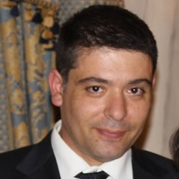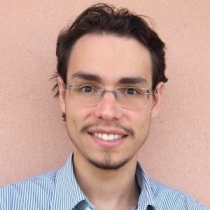Sensors and Sensor-Based Measurement Systems: Design, Development and Challenges
A special issue of Sensors (ISSN 1424-8220). This special issue belongs to the section "Intelligent Sensors".
Deadline for manuscript submissions: closed (20 January 2023) | Viewed by 11872
Special Issue Editors
Interests: sensor development and characterization; sensor- based measurement systems; microwave characterization; biomedical sensors; gas sensor for health care and environmental monitoring
Special Issues, Collections and Topics in MDPI journals
Interests: Sensor metrology; measurement systems; gas sensors; biomedical application and environmental monitoring
Interests: development and metrological characterization of sensors for environmental monitoring
Special Issues, Collections and Topics in MDPI journals
Special Issue Information
Dear colleagues,
The sensor market is reaching widespread diffusion, due to the increase in low-cost devices and the number of developed applications. In this context, the development and metrological characterization of sensor-based measurement systems constitute one of the main challenges in the development of applications in real scenarios. There are several aspects to take into consideration, the choice of the type of sensors to be used and their number, the right balance between the sensing performance and the embedded systems used for their management, as well as the reliability of the data coming from the measurement systems themselves. Aim of this Special Issue is to publish high-quality research papers as well as review articles including, but not limited to, design, development, characterization and employment of sensors and sensor-based measurement systems. New application scenarios as well as sensor technology and sensor fusion and measurement issues are also welcome.
Prof. Dr. Nicola Donato
Dr. Luca Lombardo
Dr. Giovanni Gugliandolo
Guest Editors
Manuscript Submission Information
Manuscripts should be submitted online at www.mdpi.com by registering and logging in to this website. Once you are registered, click here to go to the submission form. Manuscripts can be submitted until the deadline. All submissions that pass pre-check are peer-reviewed. Accepted papers will be published continuously in the journal (as soon as accepted) and will be listed together on the special issue website. Research articles, review articles as well as short communications are invited. For planned papers, a title and short abstract (about 100 words) can be sent to the Editorial Office for announcement on this website.
Submitted manuscripts should not have been published previously, nor be under consideration for publication elsewhere (except conference proceedings papers). All manuscripts are thoroughly refereed through a single-blind peer-review process. A guide for authors and other relevant information for submission of manuscripts is available on the Instructions for Authors page. Sensors is an international peer-reviewed open access semimonthly journal published by MDPI.
Please visit the Instructions for Authors page before submitting a manuscript. The Article Processing Charge (APC) for publication in this open access journal is 2600 CHF (Swiss Francs). Submitted papers should be well formatted and use good English. Authors may use MDPI's English editing service prior to publication or during author revisions.
Keywords
- Sensor metrology
- Sensor technology
- Sensor based applications
- Biomedical applications
- Multi sensor measurement system
- Sensor arrays
- Diagnostic applications








